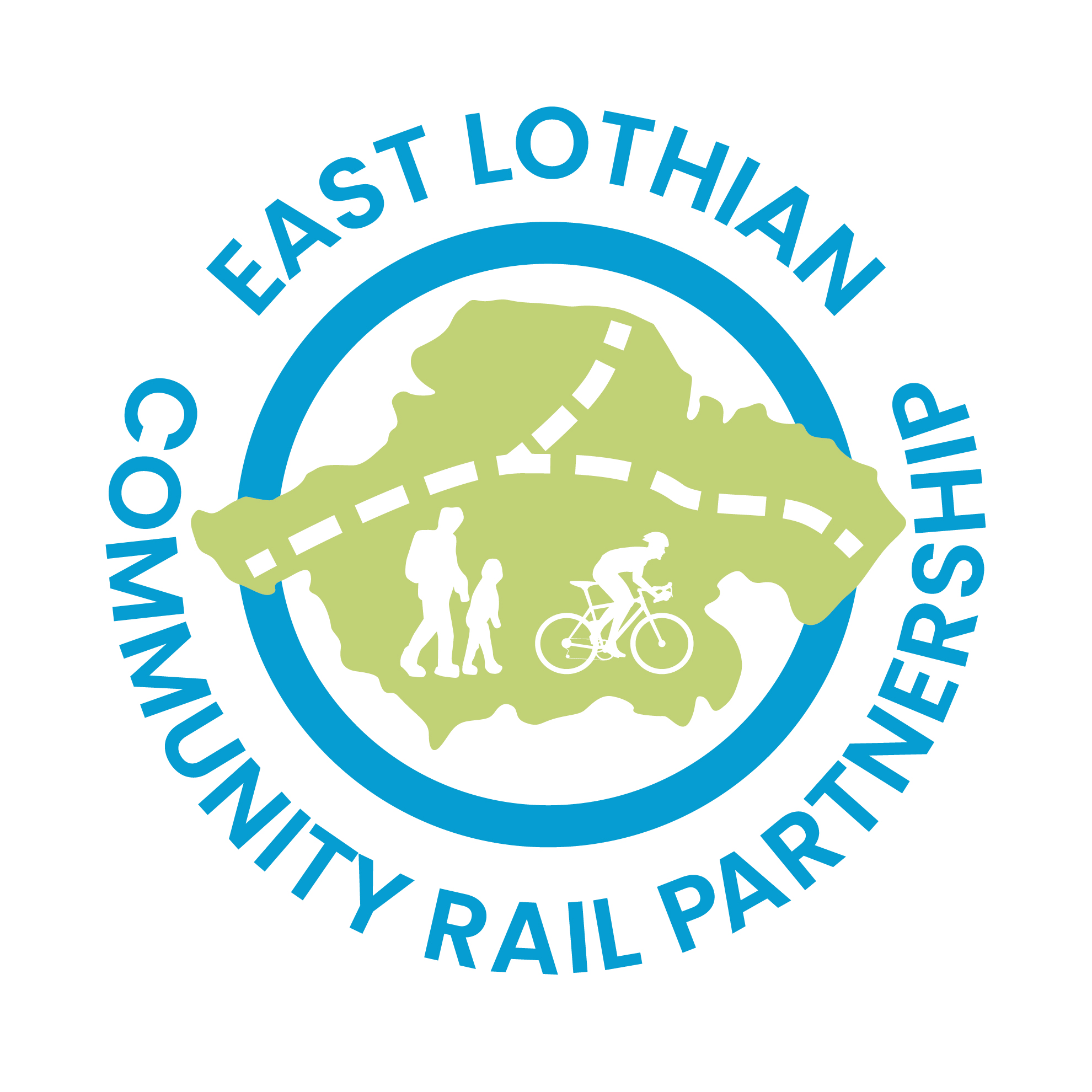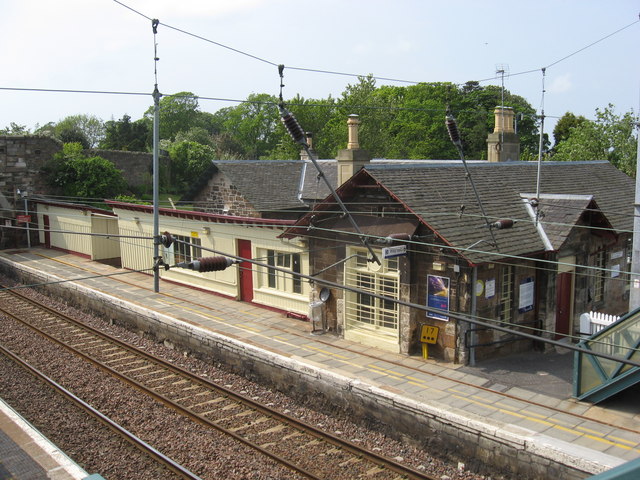To Ms. Joan Aitken, Traffic Commissioner, Scotland, 3rd January 2017
I am writing to you as Chairman of East Lothian Community Rail Partnership (ELCRP), formed when Abellio assumed responsibility for the ScotRail franchise in April 2015. I have a number of other appointments within the Transport sector which keep me up to date on a number of matters. I am currently a main board director of Bus Users UK (Norman Baker is our Chairman) and have dealings with both the Scottish and Welsh Governments on a number of issues in that capacity. I am also Chairman of the Rural East Lothian Bus Group (RELBUS), affiliated to Bus Users UK and in addition am Chairman of, and have been a main board Director of, The Omnibus Society since 1987. I also hold a number of other local voluntary appointments, not transport related.
One of the items included in the ScotRail franchise was to introduce bus/rail connectivity where possible throughout Scotland, and ScotRail has sought the assistance of the nine Community Rail Partnerships to do so, by involving local knowledge which is the correct approach as local knowledge is essential if such connectivity is to work properly.
Bus/rail co-ordination is easy to achieve where the bus service is frequent – I estimate that this would mean a 20 minute daytime frequency or more – and it is simply a question of publicising the existence of the bus and train times, as has been done by ELCRP at Musselburgh station relative to Lothian’s service 30, which runs every ten minutes.
Where a bus service is less frequent, it is necessary to co-ordinate both train and bus times to ensure a robust connection is possible. In East Lothian, ELCRP has identified North Berwick, Longniddry and Dunbar as potential bus/rail connectivity ‘hubs’ and the Transport Minister, Humza Yousaf, has also identified East Linton should that railway station open within the next few years. Wallyford Park and Ride already has substantial bus/rail connectivity in place.
In conjunction with East Lothian Council (ELC), and with their total support, it is intended that connectivity at North Berwick be introduced first, involving Council supported services (operated by Eve Coaches, Dunbar) 120 (Dunbar to North Berwick) and 121 (Haddington to North Berwick) connecting at North Berwick station with trains to/from Edinburgh. There are a number of obstacles to be overcome for this to be achieved as both ELCRP and ELC are determined that any advertised connectivity is robust, legal and will be permanent accounting for various timetable changes introduced by ScotRail. The above bus services can be dovetailed into each other so that each with a two hourly frequency could provide an hourly service in the North Berwick locality to connect with the trains. This is particularly attractive to tourists as both bus services serve most East Lothian tourist attractions in the area – Scottish Seabird Centre (in course of a major multi million pound Heritage Lottery funded expansion), Tantallon Caravan Park, Tantallon Castle, Preston Mill, Fenton Barns Retail centre, Merryhatton Garden Centre, The Museum of Flight and the Scottish Flag Centre, and on Sundays East Fortune market. ELC are particularly anxious that, due to serious car parking capacity issues at North Berwick that a ‘no car’ option is made available to tourists enabling them to travel from anywhere in Central Scotland to North Berwick and use the bus/rail connections to visit both the town and tourist attractions. ScotRail are also supportive and have indicated that they will consider an integrated ticket including one day’s unlimited travel on East Lothian’s buses included within the price. ELCRP have already in place space at 29 stations throughout central Scotland, Dundee, and Fife for leaflets to be distributed advertising the feature and in some cases full size posters.
Under the Equality Act (2010) any newly advertised facilities must be compliant where for example a railway station is already disabled compliant – as North Berwick is. An audit has been done by ELCRP and it is calculated that for bus/rail connections to be compliant and importantly robust, 8 minutes are required for a wheelchair bound passenger to disembark from a train and make their way in a manual wheelchair to the bus stop 125 yards away. (2’30” to disembark from the train, and around 3 minutes at a speed of around 1.5 mph to reach the bus stop, with a further 2’30” leeway). The bus and trains, if on time, will be matching each other with a 10 minute stop providing further confidence effectively providing 4’30” above that required for a robust disabled connection. East Lothian Council are looking into the provision of a Kessel kerb at the bus terminus, and also have involved Police Scotland to comment on any safety aspects of a bus terminating at the station and remaining there for 10 minutes (no issues expected.)
Meetings have been held with ScotRail and they have undertaken to introduce a clock-face timetable to ensure that trains and buses will always meet, albeit not until 2018.
The reason I am writing to you however is that there are potentially serious issues concerning legislation in place regarding the time required for intimation of bus timetables changing, vis-à-vis the legislation required for train times to be altered. The latter was introduced in 1993 on a UK basis and it requires railways to have embedded in the internet (and by definition a finalised timetable) 84 days before introduction. This is Westminster legislation and the view of ELCRP is that it will prove difficult, time consuming and probably impossible to have that legislation altered. ELCRP has obtained agreement from ScotRail that they will provide ELC with finalised timetables at least 84 days beforehand (there apparently had been problems in obtaining advance timetables in the past).
Bus timetable changes require 90 days’ notice to yourself, and that is from when the application is received at your offices, preparation time being considerably more than that. There is clearly a mis-match and the ability of bus times to change to reflect changing train times cannot legally be achieved.
ELCRP have suggested to ELC that there is a strong case for the 90 days’ notice of bus timetable changes to be considerably reduced to enable ELC and their contracted operator(s) to prepare and submit to you changed bus timetables which would enable the bus/rail connectivity to be maintained rather than having an enforced break. ELC have agreed to become a pilot local authority for this to be introduced should it be considered necessary.
This matter is currently being pursued through Parliamentary procedures via Rachael Hamilton, MSP who has had correspondence with Humza Yousaf, Transport Minister, and who has I gather passed the issue to appropriate members of his team in Transport Scotland. I thought however that it would be proper to advise you of the background to this issue where we have bus, rail and the local Council all co-operating and wanting this issue dealt with in the interests of passengers.
ELCRP therefore propose:
-
That the current period of 90 days to enable a bus timetable be reduced substantially to enable bus times to be changed to reflect train times which will change regularly and significantly over the next few years. ELCRP and the ScotRail agree that it is pragmatic to request the bus industry to change its legislation rather than rail.
-
It is suggested that 28/35 days be considered as the reduced intimation time required for bus timetable changes thereby providing the council/operator 49/56 days to prepare revised timetables and submit their application to you from intimation of changes to rail timetables.
-
This arrangement would only be applicable to specified bus services registered with you by either a local council/operator (in the case of tendered services) or a bus operator or both (commercial services) and would only be implemented where a rail timetable has been intimated to change.
-
No other item such as route alterations etc. would be covered by the proposal.
There has been a considerable amount of work put into this project by ELC, ELCRP and ScotRail and others all of whom have been surprised by what is required to enable an hourly bus service to connect robustly with an hourly train service. It may be that Transport Scotland have already contacted you, and if so, hopefully this letter will provide you with the background to the situation. If it proceeds, it would of course be applicable throughout Scotland, and I know that at least one other Community Rail Partnership is anxious to have bus/rail connectivity introduced at Dunblane to enable trains to connect with buses to and from Muthill and Crieff, where I gather they miss each other by one minute in some instances.
I know that you may consider that in certain situations you would be able to grant permission for changes to bus timetables at a shorter period than the current 90 days, but all stakeholders mentioned in this letter believe that having it legislated for is the correct way to proceed.
I shall be pleased to receive any observations you may have in due course.
Yours faithfully,
HARRY L. BARKER, Chairman.

